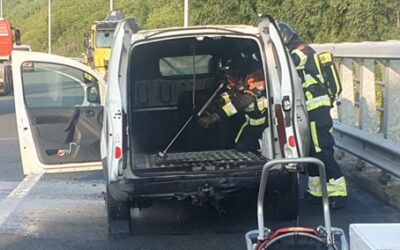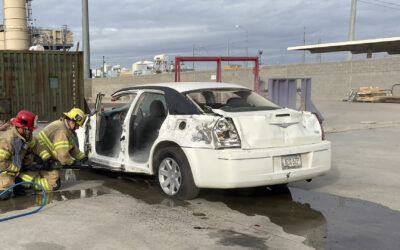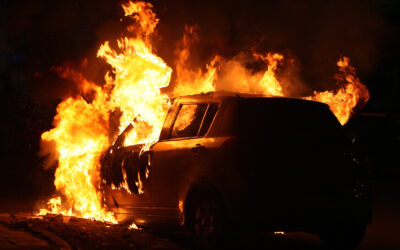Hasse Bergkvist is a Fire Investigator who has conducted more than 300 fire investigations in his long career. Hasse values Cobra for how quickly and effectively it can be deployed, allowing the firefighting to start sooner, minimizing water damage, resulting in more being salvaged. Including what can’t be measured: the sentimental value of things.
Who are you?
I’m a mechanical engineer and have worked in various roles within fire safety, education and consulting. For the past 20 years, I’ve worked in fire investigations. Over the last five years, it’s been my main focus and I’ve now done at least 300 investigations. Some major investigations can take half a year or a year, while sometimes I have a new one every third day.
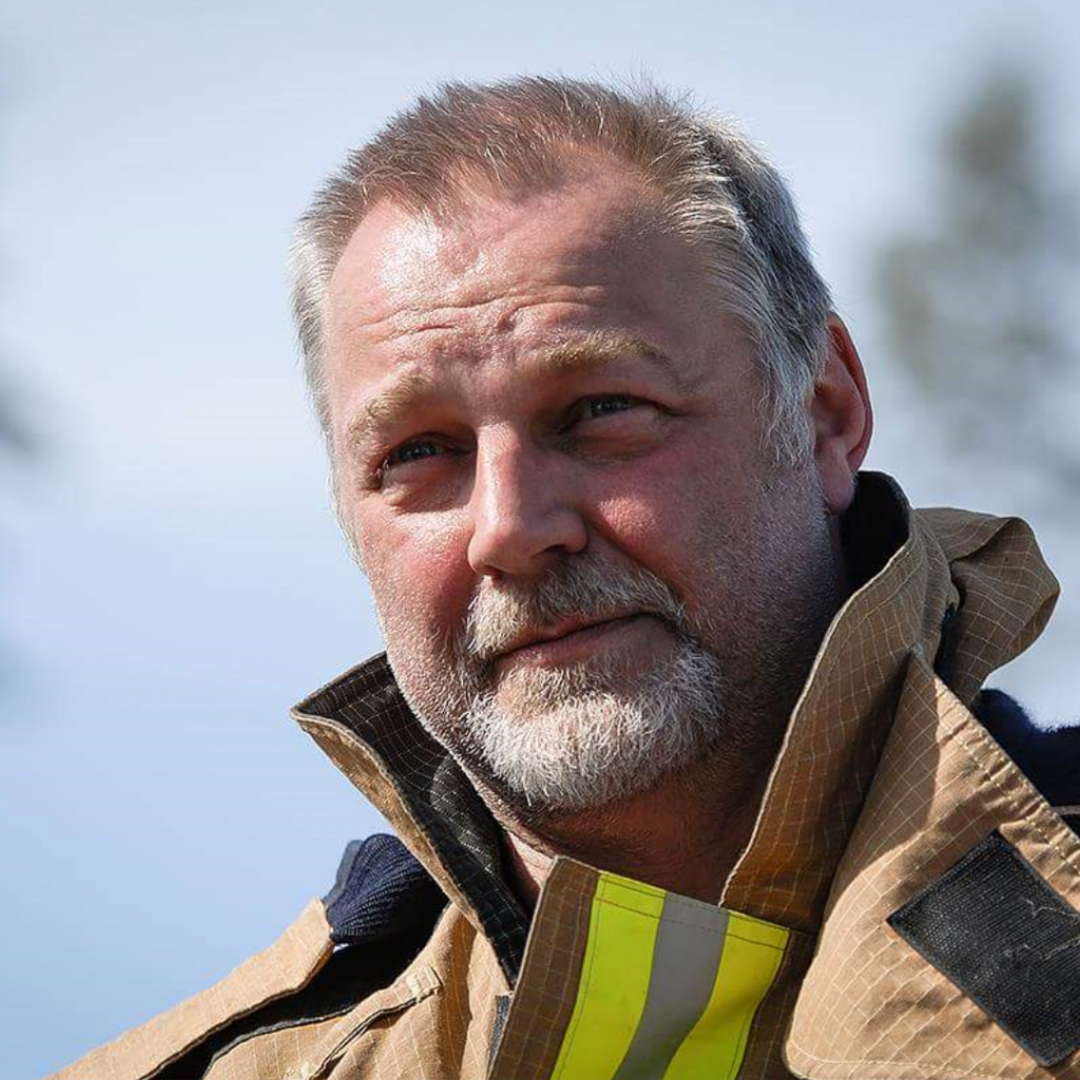
Do you investigate a lot of electric car fires?
I’ve done many investigations into car fires in general. Over time, others started reaching out, saying, ‘You’ve handled many of these; what do we do?’ And it’s the same with electric cars, where we exchange experiences.
In electric cars the problem is that the fire is enclosed inside the metal and components. We need to access it, and what’s important here is cooling, and Cobra is fantastic for that. Because you can cut into the cells from the side, from the top, or from underneath, and many systems are being developed where you place something underneath the car and puncture the battery pack. With Cobra, you can access it from all sides and angles.
What would you consider to be a successful firefighting operation?
From the fire service’s perspective, you could simplistically say it’s when you extinguish a fire and save assets. Of course, no people or animals should be harmed. But successfully extinguishing a fire doesn’t automatically mean it was a success. The fire could have been extinguished faster or with a method that caused less damage. Just because the fire is out doesn’t mean the outcome is truly successful.
That’s the general measure: fire burns, fire service arrives, fire goes out, everyone is happy. But that’s not the whole truth, and the fire service doesn’t just stop there. They’re always refining their tactics and methodologies to make their operations more effective.
What does a ‘happy fire’ mean?
A ‘happy fire’ refers to the way everything is ultimately measured in financial terms. The cost of the fire is what matters. For instance, a fire in an apartment might cost sixty thousand Swedish crowns. At first, you might get upset about that cost. But when you look at it differently, you might think, ‘If we hadn’t done this, it could have cost two million’. In that case, you don’t focus on the sixty thousand; you realize that it could have been much worse.
So, it’s a comparison between the cost of fire and the value of what was saved?
Yes, for example, with an arson that damages a school’s facade, you might think it’s just vandalism. But what if the window had broken? That might be just one minute away, then the window would have shattered because of the heat, and it would have spread into the classroom. Then we would have had to relocate students. We would have had to do a lot of things. This quickly turns into millions. So, yes, it’s unfortunate that it burned on the outside. But it could have been much, much worse. You have to consider what could have happened, prepare for the worst and hope for the best.

Just because the fire is out doesn’t mean the outcome is truly successful.
How important is it to get the firefighting started in time – to get that first drop of water in place?
The key is to extinguish a fire quickly. We must measure the time from when the fire is noticed to when the firefighting begins. The suppression might take 20 minutes or two hours; the key is when you start.
When the fire service arrives after ten minutes, they’re usually on the street, setting up. Time is measured until they get water on the fire. That time must be shortened, and one way to do that is by providing them with good information upon arrival, so they know exactly where the fire is and how to approach it. You tell them it’s in the kitchen on the third floor, and the easiest way in is “through this route.”
And one other way to buy time is to try to contain the fire until it can be extinguished. It’s been proved that the cutting tool, the Cobra, is incredibly effective in this regard: you don’t need to open doors, break windows or provide oxygen to the fire. Instead, you can actually cool the fire while you build up a system with hoses.
I can see when they have used the Cobra, and when the Cobra is used, my job becomes much easier because the fire is controlled in a way that leaves more to investigate without water damage ruining crucial evidence.
My job as an investigator becomes much easier when I have a lot of things I can look at. When they’ve sprayed a water jet straight into a kitchen where there’s a fire, everything gets moved around, there’s a lot of pressure, and the traces I’m looking for are generally completely gone. They don’t exist.
With Cobra, I’ve been to a house fire where it burned in the attic, where it’s damp and there’s fire damage. But all the items remain exactly as they were before the fire, so I can see everything clearly and follow the situation in a different way.
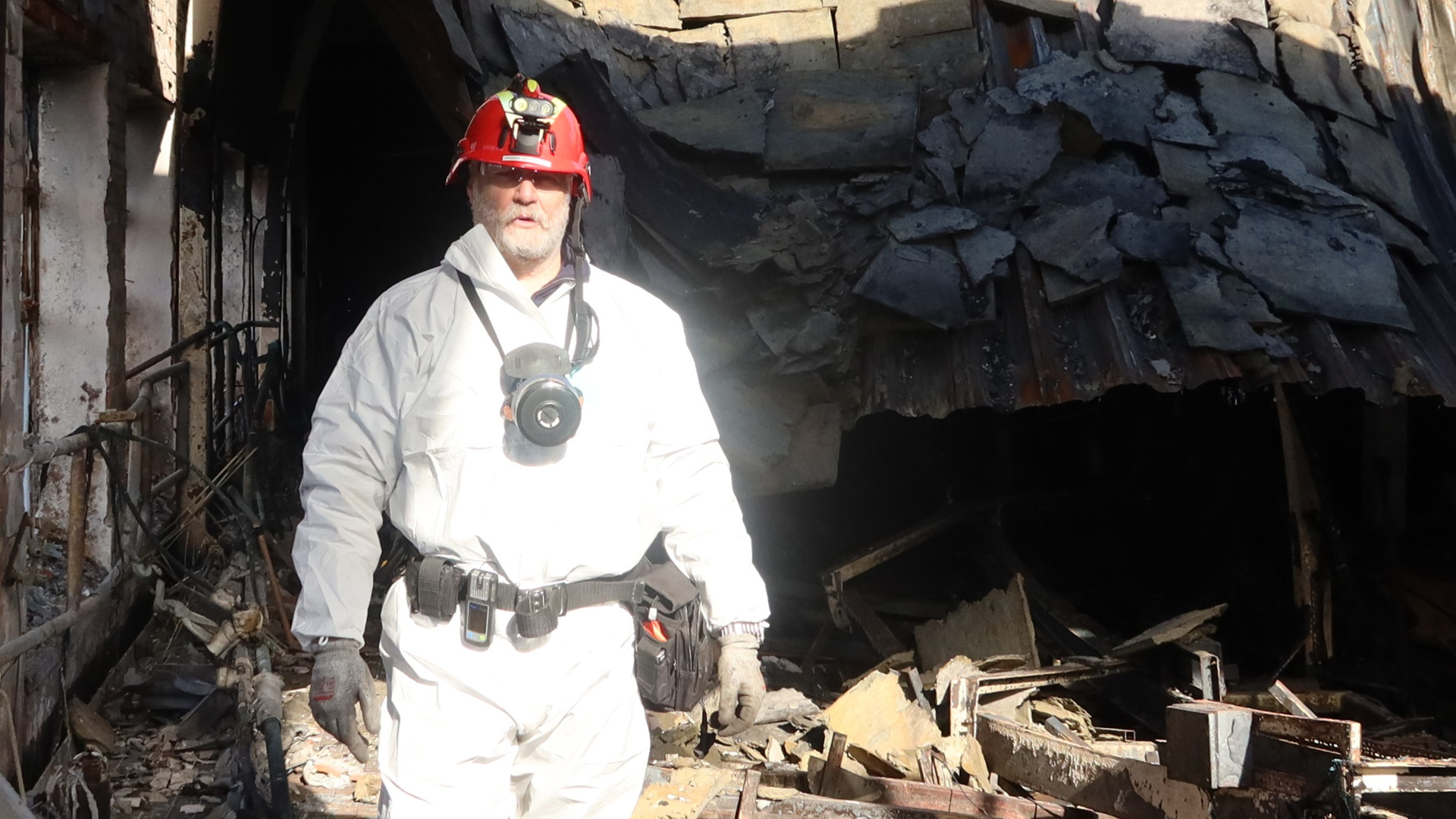
How critical is time?
Extinguishing, cooling, freezing the situation and being on the right side of two minutes is critical. That can be the difference between a damaged interior and the house burning down to the ground. It’s very difficult to put a price on that. We need to be better at talking about the difference and explaining how close it was and what the success factors were at that moment.
If we look at private homes… it could be that the house isn’t worth more than a million, so if it burns down to the ground, it costs a million to build up or we save it and have an expensive clean-up, and it’s still a million in cost. But in the second case we have a homeowner who gets back a lot of value and memories. A homeowner who gets their belongings back is probably much happier than the neighbour who gets a new house but has lost their photo albums. These are soft values that go beyond dollars and cents.

A homeowner who gets their belongings back is probably much happier than the neighbour who gets a new house but has lost their photo albums.
Do you have examples where Cobra has been particularly effective?
I’ve had a few instances where there have been very long entries. That is, you have to get in by breaking the front door, then you need to break another door, and then you go into a basement corridor and have to break through another place before finally getting to the actual fire room. And here, you’ve been able to get in from the other side and cut a hole in a wall with Cobra, so you can fight the fire from another room. This way, you have plenty of time to get in, and by the time you get there, the fire is essentially out. The damage around it is much, much less, and you haven’t had to break so many things.
Recently, I went to one of those attic fires where it had burned a lot. The roof had partially collapsed but the fire had been difficult to extinguish from the outside. So they had entered the house and cut through the ceiling with the Cobra, then sprayed straight up into the attic. When I went in the next day and turned on all my lights, it looked like a beautiful spring morning with dew on the spiderwebs and on the ground. The sawdust was damp, but only the top layer, so there was no need to replace all the insulation. I can immediately tell when a Cobra has been used because there are footprints on the floor. Unlike when water has been used traditionally where sometimes you must put on rubber boots/wellies because there’s several centimetres of water on the floor.
How significant is water damage to properties?
I don’t know this, but I would guess that insurance companies probably have just as much water damage in terms of costs as fire damage. Water leakage costs an enormous amount of money. The fire I attended yesterday involved a burst pipe, and there were probably some burn marks in the stairwell outside the apartment. But the apartment below was badly damaged. The parquet floors, walls and ceiling are affected because water has run straight through. When water gets everywhere, the moisture causes mold damage that can appear one or two years later. That’s something insurance companies must take into account – how much of the damage was caused by water and smoke compared with the fire itself.
And this is where there’s a huge difference between traditional firefighting and Cobra. There’s no doubt about it: Cobra uses less water.
Would you say that the Cobra is something every team should have with them?
Having a well-equipped toolbox and knowing how to use the right tools is essential. I’m surprised the Cobra isn’t used more often. There are many places I’ve been where the damage could have been limited in another way if it had been used initially.
Cobra is particularly useful in confined spaces. It allows you to get control of the situation quickly without having to break windows or doors and give the fire more oxygen. It’s a fast and effective way to cool down the fire. It’s just about practicing and knowing the limitations. It’s not the tool that does everything, but it’s an effective tool in the toolbox.
You work primarily for insurance companies – are the statistics you’d want to see from the insurance companies difficult to measure?
It’s very difficult to measure, but I often make an assessment and say: ‘Here, it was just minutes away from a full flashover in this house. We wouldn’t have been able to control it’. It all comes down to those last few minutes – if a window had cracked or if air had gotten in, it could have spread quickly. By freezing the situation early, the fire service can intervene much faster, and that could be the difference between saving the contents of the building and losing it all. It’s hard to put a price on that.
Are there different types of objects, buildings or businesses that are more critical to protect in terms of salvage value?
I would say listed buildings and old buildings. We don’t want to damage those…and water damage is often horrific in these cases.
Why Cobra?
Speed and cost-effectiveness. USP number one is definitely speed. We also don’t get the same water damage. And clearly, damage around it is less, meaning a smaller cost for everything around it.
In almost all cases, I have to praise the fire service for doing a very good job, and they work hard. But I can sometimes see afterwards that this could have been done in another, better way. We need to become better at using the tools we have at our disposal, including the Cobra.
